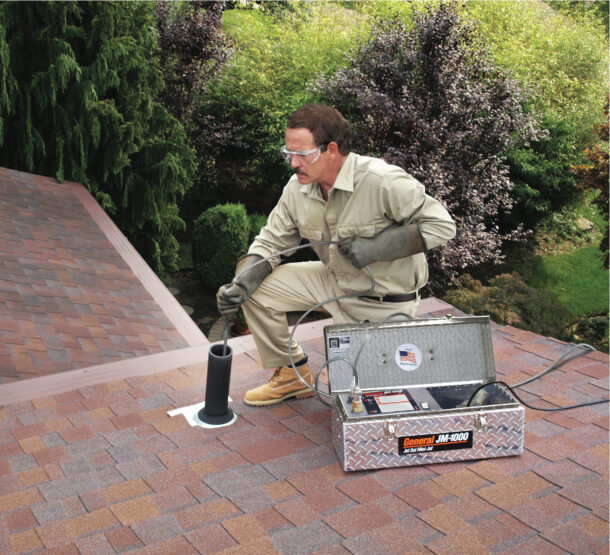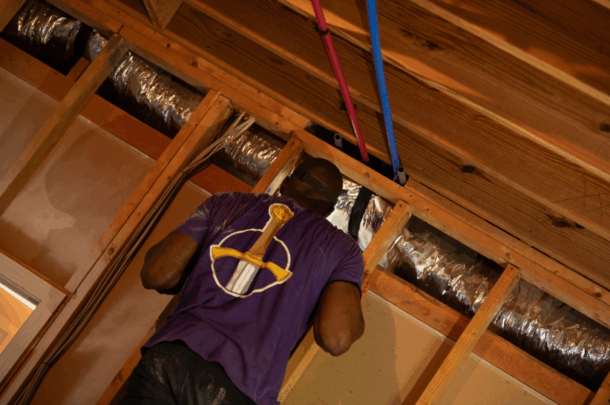Table of Contents
When there are signs of water damage in a building, it can be easy to assume that the roof is the problem. Leaks are a common issue that can lie dormant and create serious damage over time, so it is important not to make incorrect assumptions about the cause. Tradespeople who aim to provide the most effective solutions may need to collaborate with plumbers on these aspects of leaks to find the culprit and address it.

Presence of Water
Many leaks do not have any standing or dripping water to lead property owners to find the problem, but the presence of water can help identify the likely cause. Leaking pipes sometimes result in standing water, such as a small pool of water in the basement. By comparison, roof leaks do not tend to release so much water that pooling is common. Instead, property owners are more likely to see dripping water coming from the ceiling, particularly on the top floor of the building. The presence of water is a delayed symptom of a leak, calling for a prompt solution.
Location of Stains, Mold, or Mildew
Property owners often discover a leak by observing water damage in the structure, and the location provides information about the source. If left unresolved, roof leaks may result in stains in the ceiling or cause the paint on the ceiling to bubble or peel. In contrast, plumbing leaks usually cause staining near the damaged pipe, commonly under the floor or in the walls. Owners can also direct the search based on the accumulation of mold or mildew in these areas, which may show up faster than stains.
Timing
The timing of the leaking and the persistence of symptoms may provide additional insight into the cause of the leak. Roofing leaks usually only create dripping and other signs for a short period of time surrounding weather patterns. By comparison, if the skies have been clear for days but the pool of water in the laundry room keeps getting bigger, the cause likely stems from a plumbing leak. Additionally, plumbing leaks tend to result in greater water damage in a shorter period of time. Serious water damage from roofing leaks can happen, but it is a sign that happens much later in the process.

Signs of Damage
Leaks cause significant damage to a structure over time, but the location of that damage makes a difference in the approach and solution. Long term, roof leaks can weaken the roof decking and cause it to sag or even collapse in extreme situations. The roof may have other, smaller indications of damage, such as damaged shingles or leaks around the flashing. A roofing company can identify these issues quickly. For water damage resulting from plumbing, property owners should look at the floor and foundation. Cracks in the foundation, uneven or warped flooring, or unexplained green spots in the landscaping may reflect a plumbing leak. Plumbers use soil probes to assess soil moisture and detect underground leaks.
Water Consumption
Absent other visible determiners, plumbers can guide property owners to look at their water consumption. These professionals can also use tools to assess water pressure throughout the structure. A significant plumbing leak can cause thousands of gallons of water flow per hour and keep that pace until the leak is resolved or the water supply is shut down. Even minor pipe leaks may trigger hundreds of gallons of water waste per day. If water consumption appears to be consistent and appropriate for the typical uses of water on the property, a roof leak is much more likely to be the cause.
Finding the cause of a leak requires care because water leaks can create significant water damage. Mistakenly presuming that the trigger is a roof leak instead of a plumbing leak may result in costly repairs that do not actually address the problem. By working with plumbers to provide a thorough evaluation of the property, professionals can increase the likelihood of a successful fix.

Author bio: Ricky Salyers is the founder of Lane’s Contracting, a top-quality roofing, siding, and window replacement services company dedicated to providing reliable and professional solutions. Established in 2005, Lane’s Contracting serves the greater Raleigh and Fayetteville, NC areas.




Join the conversation: